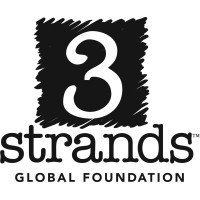Safeguarding Schools: Preventing Human Trafficking
Watch the RecordingListen to the Podcast
Most educators had not seen evidence of human trafficking happening in their schools, according to an audience poll conducted during the edLeader Panel “Human Trafficking Prevention Education in Schools.” Yet 90 percent of the high schools reviewed in a recent San Diego County study found evidence of local trafficking, according to Monica Dominguez, Coordinator of School Counseling for Socorro Independent School District (TX).
More than 32 million tips were called into the national abuse and trafficking hotlines last year, with occurrences in all 50 states, according to Ashlie Bryant, CEO and Co-founder of 3Strands Global Foundation. “Human trafficking is often a crime that occurs in plain sight, and what’s portrayed in the media isn’t necessarily what we see in our schools,” she said.
Defining Human Trafficking
Bryant said the legal definition of human trafficking is the commercial sexual exploitation (sex trafficking) and forced labor (labor trafficking) of someone. Three things must be present if a student is being trafficked: coercion, fraud, or force. Most of us understand fraud can be a lie, misrepresentation, or some way of tricking someone. Force seems self-explanatory.
However, Cynthia Cook, Education Manager at 3Strands, explained coercion is more tricky. According to Cook, 98 percent of victims know their trafficker. Forty-one percent of U.S. trafficking is familial, meaning the trafficker is a family member. Students may not recognize the subtlety. It can be nuanced with a friend or family member asking the child to do a “favor” that can involve sex or other crimes. Participation can seem like a choice made or consent to outsiders when it isn’t.
This is an essential distinction for getting involved. Students can be coerced for fear of deportation, harm, or other consequences. Warning signs manifest in student behavior.
Red Flags to Save a Life
Bryant explained trafficking often goes unreported for three reasons:
- Victims may not be aware it’s happening to them
- Communities don’t identify what’s happening as trafficking
- The warning signs are often overlooked
According to Dominguez, a typical situation can be a student forced to work long hours after school and on weekends. She described a past student whose uncle forced the child to work long hours, threatening the student with deportation and harm. The only apparent signs were the deterioration of the student’s appearance and attendance. The panelists said common red flags like this also include:
Sudden Changes
Sometimes it’ll be a 180, said Charisma De Los Reyes, Program Coordinator for the San Diego County Office of Education. A student suddenly has new, expensive clothes or other luxuries that they wouldn’t have afforded. A good-performing or average student begins suffering from tardiness or dropping grades.
Missing Time Periods or New Friends
Are there periods when even the family has no idea where the student has been? Have they been spending secret time with a new friend? De Los Reyes advised keeping eyes and ears open and listening for clues. Recruiters can be fellow students on campus.
A Change in Student Affect
Are they appearing increasingly sad, tired, numb, or hungry? If so, it’s worth noticing and digging deeper, said Cook. Isolation is part of the trafficking process and happens over time. Victims soon believe no one cares—so they start caring less and less, too.
All the panelists agreed that sensationalism in movies and online distorts the more discreet signs of trafficking. Dominguez said we must be curious and ask hard and safe questions so students know they have someone to trust.
What Schools Can Do
Prevention can begin at any entry point, even a suggestion by a parent, teacher, advisor, or district leader. Even if districts already have mandatory basic training in trafficking, prevention is most effective when the program is systematic and practiced yearly. Bryant outlined three tiers to include.
- Primary tier: universal education and prevention for everyone
- Secondary tier: responding to trafficking, including how to identify victims’ recruiters and knowing how to respond
- Third tier: treatment, recovery, and reintegration of victims
De Los Reyes emphasized children are vulnerable because they lack the life experience and maturity to discern between bad actors and those they can trust. A bad actor will take full advantage and tell the student being groomed whatever is necessary to gain their trust. All adults need to know warning signs and fully understand a teen’s or child’s naivete automatically puts them at risk.
District leaders can find partners, like 3Strands, that have extensive curricula for all stakeholders and meet national standards. The panelists recommended looking for best-practice programs that include protocol, training, education, and research. Age-appropriate training for students is also essential, as is trauma-informed training so educators can intervene appropriately.
Ultimately, educators need to be knowledgeable and nonjudgmental, said the panelists. Often kids don’t know they are being exploited, and they need to know it is not their fault.
Learn more about this edWeb broadcast, Human Trafficking Prevention Education in Schools, sponsored by 3Strands Global Foundation.
Watch the RecordingListen to the Podcast
Join the Community
School Health & Safety is a free professional learning community that provides educators, school staff, school leaders, and district administrators with a forum to collaborate and discuss the issues and practices that can keep schools, students, and staff healthy and safe.

Article by Suzanne Bell, based on this edLeader Panel




Comments are closed.